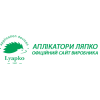Application therapy Lyapko in diseases of the liver and gallbladder
Every year the number of patients with liver pathology increases in the world. It occupies a large place among the causes of morbidity, disability and mortality.
4 List of diseases of the liver and biliary tract
5 Symptoms of diseases of the liver and gallbladder
8 Application therapy Lyapko in diseases of the liver and gallbladder
9 Prevention of stagnation of bile and energy in the meridian of the gallbladder
Liver functions
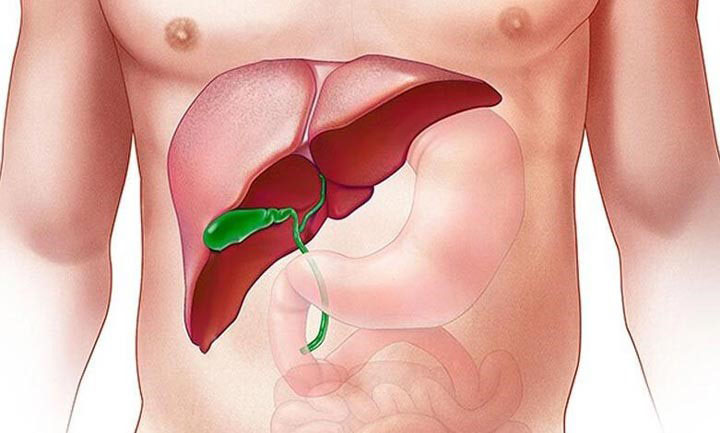
Liver cells produce bile, which is stored in the gallbladder, it is necessary for the digestion of food, primarily fats. Without bile, the process of digestion is impossible. Also, the liver is one of the most important organs not only of digestion, it performs a large number of other functions, the main of which are cleansing the body of toxins, cholesterol synthesis, participation in metabolism. Participates in the metabolism of proteins, fats, carbohydrates, vitamins, in the process of hematopoiesis. The liver produces biologically active substances (such as vitamin K, etc.), which are directly involved in blood clotting.
It plays an important role in the detoxification of the body: it clears harmful substances from the blood, makes them less toxic to the body and promotes faster excretion through the gastrointestinal tract and urine.
Supports in equilibrium and balance the work of the endocrine, immune, cardiovascular systems, etc.
What does reflexology say?
One of the basic ancient concepts about the function of the liver is that it is the seat of temper, anger and rage. According to the laws of reflexology, the liver is responsible for the vessels.
Also, the liver is a blood depot, that is, it performs the functions of storage and regulation of the amount of blood, distribution of blood to internal organs. With liver deficiency (blood stasis), systemic vascular diseases (varicose veins, hemorrhoids, cardiovascular diseases, etc.) and tendons occur. These data are confirmed by modern research.
It is known that about 50 - 60% of circulating blood can be retained in the liver.
The concept that “anger hurts the liver” is also valid, because in a state of anger, norepinephrine and adrenaline are intensely released into the blood, which is accompanied by the release of blood from blood depots, including from the liver.
Hippocrates believed that the presence of irritability and a pessimistic mood lead to a violation of the outflow of bile from the liver and gallbladder. In such cases, it is often said: "A bilious person."
It has been noticed that after a state of anger, discontent, anger, hemorrhoids, varicose veins can worsen, blood pressure rises, pulse speeds up, etc. Arrhythmia may occur in the pathology of the gallbladder.
gallbladder meridian
The gallbladder meridian is paired: it runs along the right and left sides of the body.
The external course of the gallbladder meridian originates at the outer corner of the eye, passes through the temporal bone, goes around the ear, stretches through the forehead, occipital region and lateral surface of the neck to the armpit. Then a broken line runs along the outer side of the chest, thigh and lower leg, the back of the foot, ends at the 4th toe (Fig. 1).
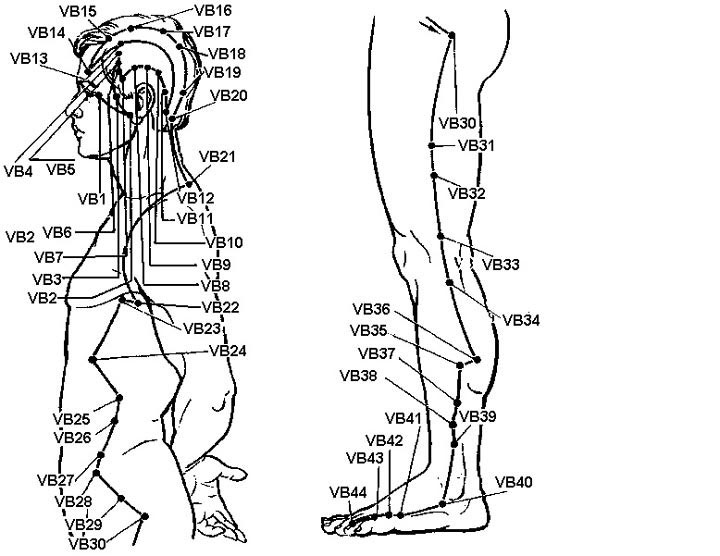
Fig.1 Meridian of the gallbladder
The internal course of the canal begins at the shoulder, passes through the chest and diaphragm, along the esophagus, around the stomach and liver, and ends with branches in the gallbladder.
The gallbladder canal has three branches:
- from temple to ear;
- from the chest and through the diaphragm to the liver and gallbladder;
- from the gallbladder to the lower abdomen and pelvis.
Knowledge of the course of the meridian explains the connection between headaches and the gallbladder, as well as the impact on the points of the gallbladder for the treatment of lower back pain, intercostal neuralgia.
Once the gallbladder is removed, the liver takes over its function. From the position of Chinese medicine, if the gallbladder is removed, its meridian still remains and performs its functions. And if a person continues to live in anger, aggression, then problems remain and even intensify, stones can form in the liver ducts.
List of diseases of the liver and biliary tract
- Hepatitis (acute and chronic) - inflammatory lesions of the liver, caused by viruses, protozoa, helminths or toxic substances. Progressive hepatitis can progress to cirrhosis.
- Liver cirrhosis - damage to the liver with the death of its cells, replacement with connective tissue, cessation of the functioning of the organ and leading to the death of the patient.
- Dystrophies due to primary metabolic disorders in hepatocytes - fatty, pigmentary, cholestatic, hepatosis.
Disorder of bile formation and bile secretion:
- cholelithiasis (cholelithiasis);
- cholecystitis (acute and chronic) - inflammation of the gallbladder, can develop against the background of cholelithiasis, as well as in the absence of stones;
- cholangitis - inflammation of the bile ducts;
- violation of the motor function of the gallbladder and ducts: biliary dyskinesia in hyperkinetic, hypokinetic and mixed types, which have different symptoms.
Symptoms of diseases of the liver and gallbladder
- Pain, heaviness in the right hypochondrium, radiating to the back and right shoulder.
- Dyspeptic phenomena: nausea, vomiting, diarrhea, constipation, flatulence, belching, dryness, sour, bitter taste in the mouth, nausea.
- Rapid fatigue, weakness.
- Yellowing of the sclera of the eyes, trembling in the hands.
- "Liver palms" - bright red color of the inside of the palms; the appearance of vascular "asterisks" on the body.
- Insomnia, dizziness, tachycardia, blurred vision.
- Damage to hair and nails, skin itching, rash, dermatitis.
- Darkening of urine and light color of feces, sometimes fever, etc.
Many chronic liver diseases are almost asymptomatic for a long time, manifested by increased fatigue. And only in the later stages there is a vivid clinical picture: pain, jaundice, edematous-ascitic syndrome, severe metabolic disorders, etc.
Diagnostics
Assigned: laboratory tests of blood, urine, feces, ultrasound of the abdominal organs, fibrogastroduodenoscopy, MRI, liver scan, etc.
Treatment
Treatment of diseases of the liver and biliary tract is prescribed individually for each patient, based on the nature and severity of the course of the disease.
Medical treatment. Antispasmodics, anticholinergics, analgesics, sedatives are used. Antibiotics are prescribed to suppress inflammation.
Mandatory diet therapy (diet No. 5 according to Pevzner) with the exception of fried foods, spiciness, bitterness, smoked meats, and alcohol.
For pathologies that are not amenable to conservative treatment, surgical treatment is prescribed.
Physiotherapeutic procedures that promote either stimulation of the tone of the gallbladder and biliary tract (with a hypotonic-hypokinetic form), or relaxation of their hypertonicity (with a hypertonic-hyperkinetic form).
Apply: electrophoresis of medicines, magnetotherapy, laser therapy, paraffin applications on the abdomen, coniferous baths, reflexology, Lyapko application therapy.
Sanatorium-resort treatment - intake of mineral waters, which normalize the formation and excretion of bile, relieve spasms, dilute bile stagnation, and relieve inflammation.
Application therapy Lyapko in diseases of the liver and gallbladder
Lyapko's applicators in various modifications (plates, rollers, applique belts, applique tapes) are an original, powerful device with many health-improving therapeutic possibilities.
Their action is based on the principles of traditional Chinese medicine - superficial multi-needle acupuncture, as well as on the general physiological mechanisms of life.
More detailed information can be obtained in the article "Lyapko applicators - mechanisms of action and application zones".
In case of pathology of the liver, biliary tract, accompanied by a decrease in appetite, reduced nutrition, dyskinesias and other symptoms of functional insufficiency of the digestive system, it is recommended that the applicator or roller be applied to the areas of the abdomen, back, lower back after eating in order to activate and stimulate enzyme systems and improve food digestibility.
Lyapko's application therapy for these zones is indicated to improve the functioning of the abdominal cavity organs, the intestines, where the largest amount of lymphoid tissue is located, which is responsible for the functioning of the immune system. It is used both as an independent procedure and as a preparation for relaxing the muscles of the anterior abdominal wall for visceral and lymphatic massage of the abdomen.
These procedures improve the functioning of internal organs, relieve congestion, inflammation in them, restore the functioning of the lymphatic system, and increase immunity.

Areas of application for diseases of the liver, gallbladder (Fig. 2): main 5; auxiliary 6, 15, 16, 17; additional 21, 23, (25), (28), 29, 30, 31.
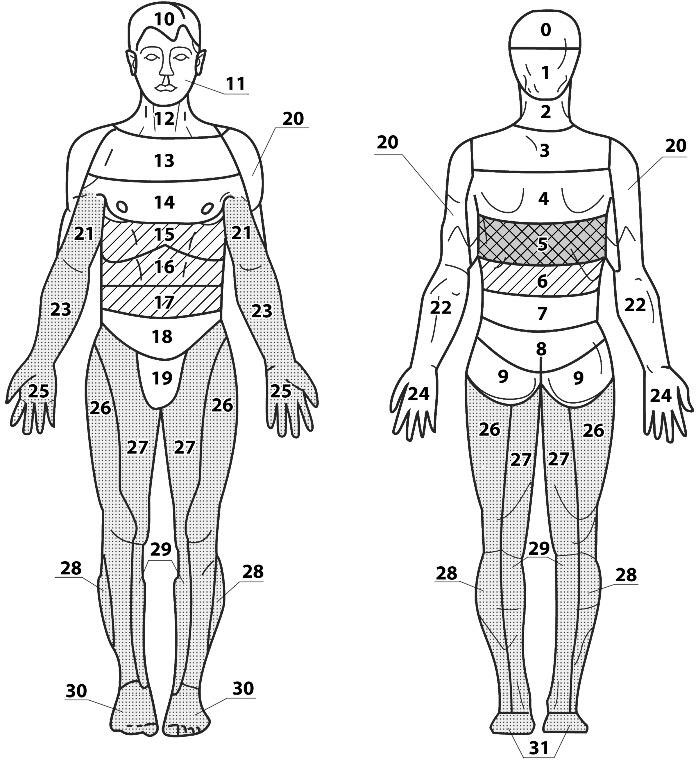
Fig.2
The following applicators are recommended.
Options for applicators for the back and abdomen (main and auxiliary zones).
The applicator “Large mat”, “Large needle massage mat”, “Chance 6.2x4” are applied along or across on zones 5, 6 and on the lower chest and upper abdomen, on zones 15, 16, 17.
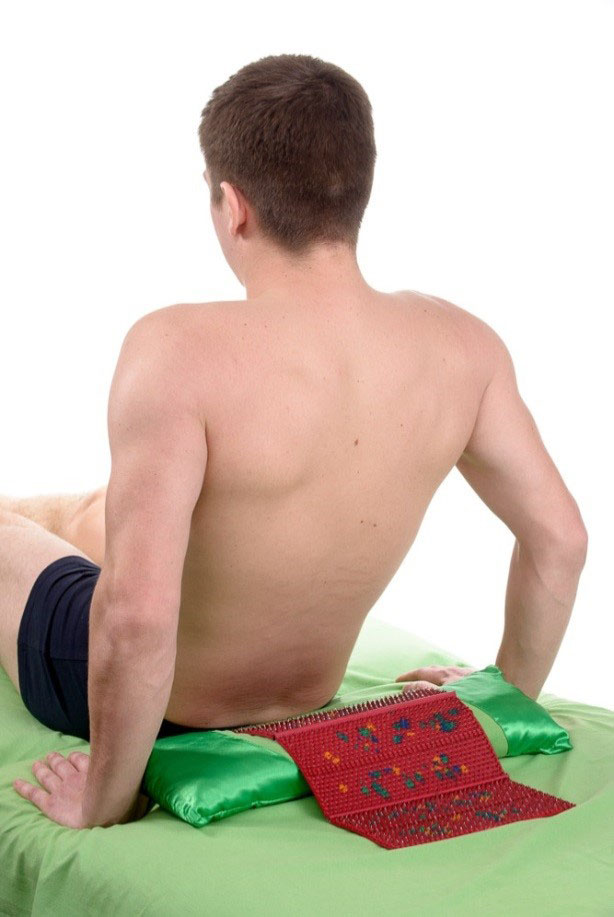
"Chamomile M" "Quadro", "Chance", "Folk", "Massage Needle Pillow" are used on the back, with the capture of zones 5, 6, as well as on zones 15, 16, 17. These zones can be affected alternately or simultaneously . Be sure to act on the liver projection zone - the right hypochondrium, it is possible in the position on the side.
The exposure time is 15-20 minutes.
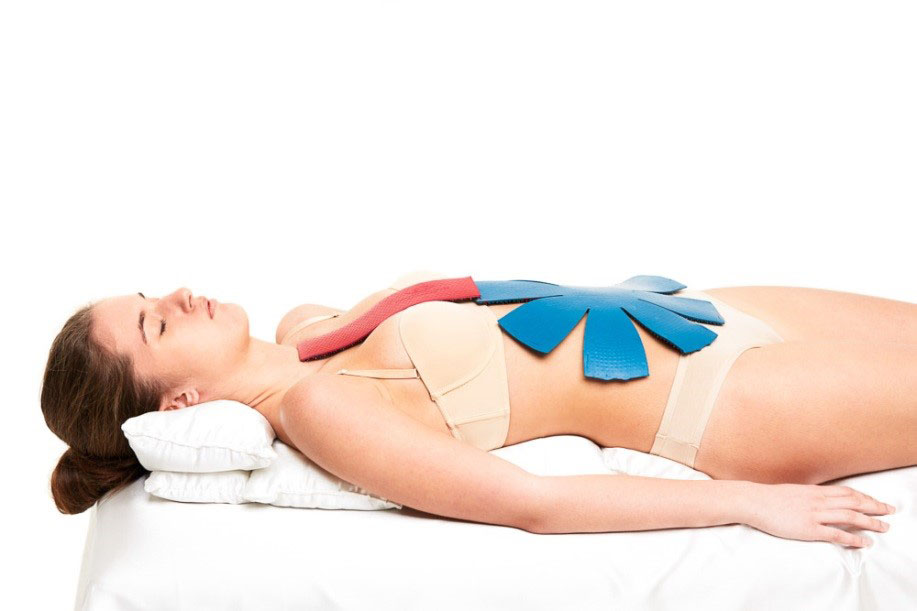
Belt "Kid", "Satellite", "Universal M" - is fixed across the spine. The plates of the belt can be moved apart so as to simultaneously act on zones 5, 6 on the back and 15, 16, 17 on the anterior abdominal wall.

You can also wrap these zones with the Magic Tape "Health" belt. The exposure time is 15-20 minutes.
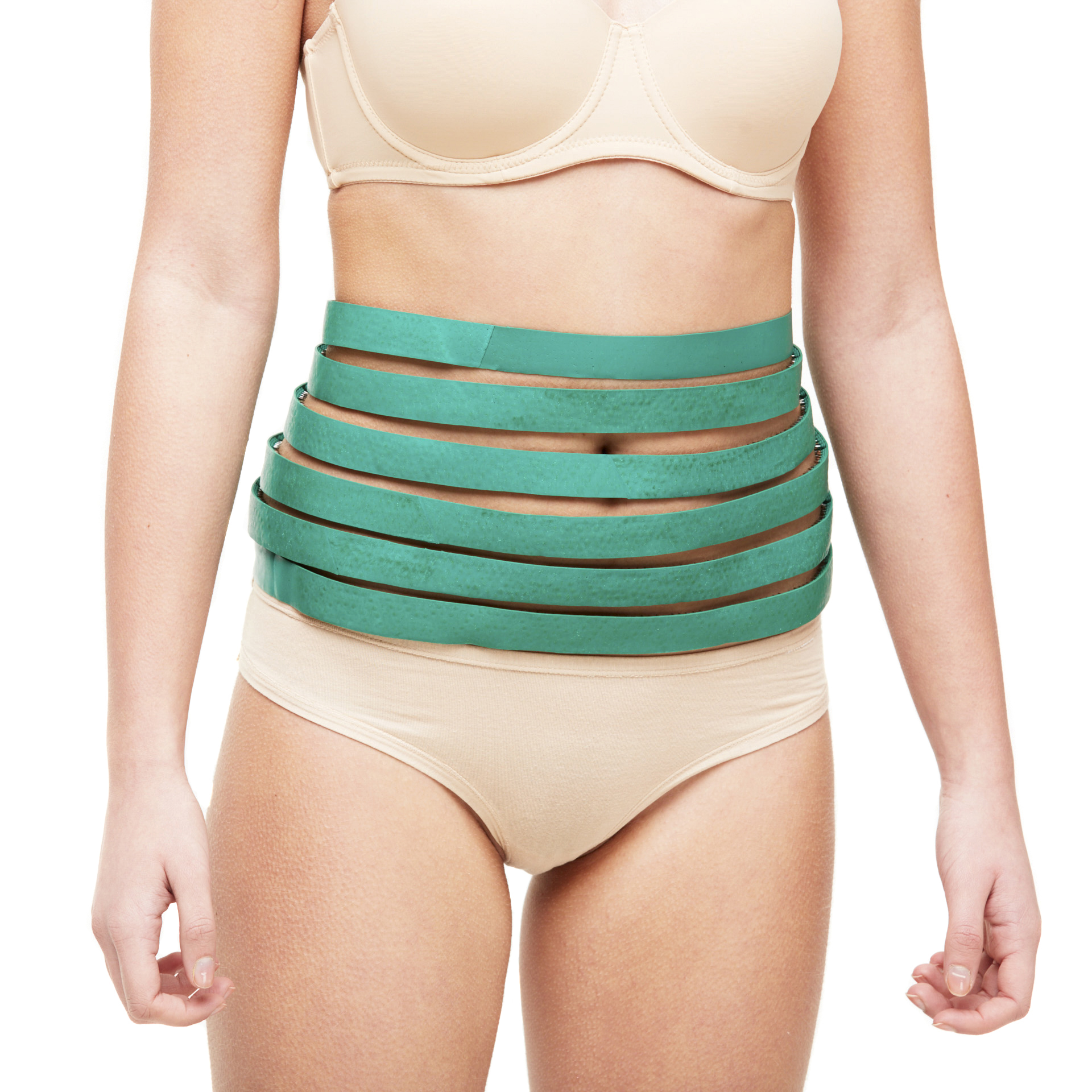
Run-in with “Large Roller M”, “Universal Roller M” zones 5, 6, 15, 16, 17. Exposure time 3–7–10 minutes (until a uniformly pink color appears).

Impact on additional zones on the arms and legs can be carried out with the “Large Roller M”, “Universal Roller M” for 3–7–10 minutes. You can also roll the meridian of the gallbladder with a roller from both sides from top to bottom (in the direction of energy movement in it) for 5-10 minutes.
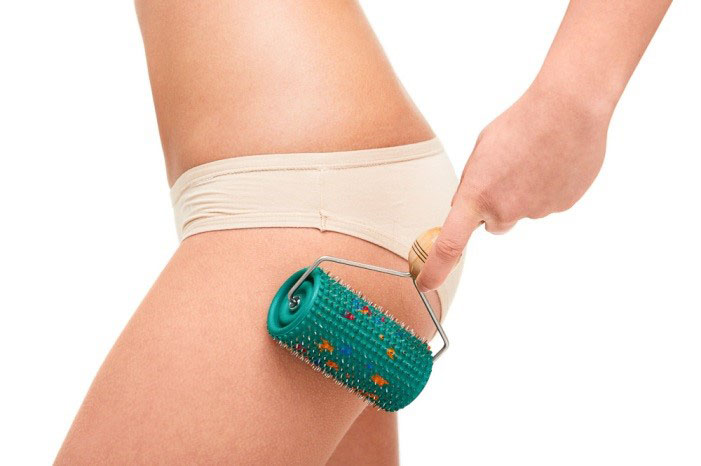
You can fix the belt “Magic Ribbon “Health” on them. The exposure time is 15-20 minutes.

Applicators Lyapko and Su-Jok therapy
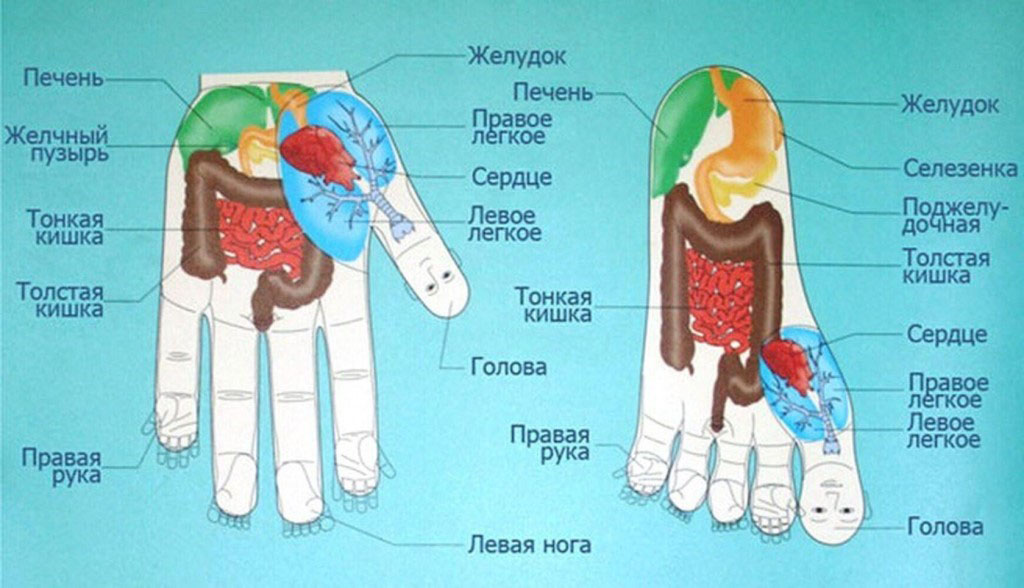
Regular exposure for several minutes with the “Needle Ball”, small applicators “Baby”, “Kraplinka” on the active zones of the liver and gallbladder correspondence on the palms and feet according to the Su Jok therapy method will help to significantly improve their condition.

It is better to end the session by exposing the feet using the Insole Plus applicator, the exposure time is 15-20 minutes.
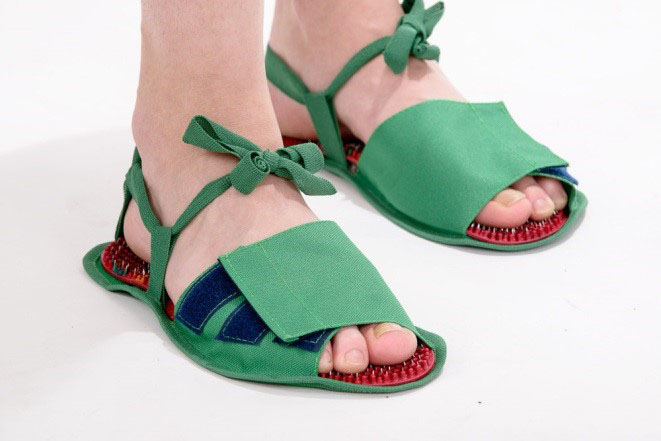
In the presence of a large number of applicators, it is possible to carry out the procedure with simultaneous action on the main, auxiliary and additional zones.
It is also necessary to massage the lower thoracic spine, abdominal zones with the help of the massager "Pharaoh", "Pharaoh L".
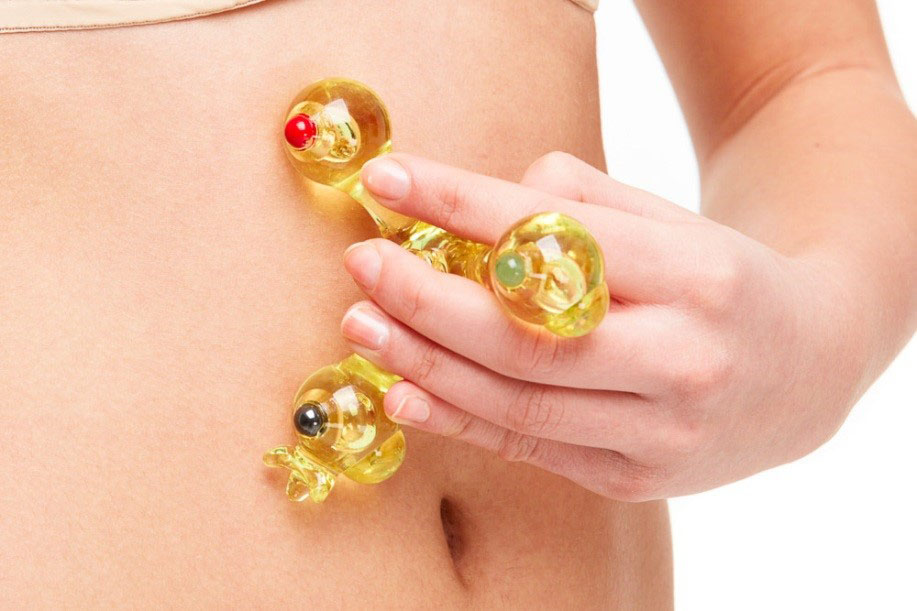
Prevention of stagnation of bile and energy in the meridian of the gallbladder
- Eat 3-4 meals a day, drink tea from choleretic herbs in between.
- Drink enough water.
- Need to move more. Hypodynamia leads to stagnation of bile.
- Don't limit fat. Better - ghee (ghee), avocado oil, coconut, olive, linseed. Fat should be in every meal. Bile is released into the duodenum only when fat enters the intestine with food.
- The gallbladder needs magnesium, lecithin, vitamin C, and fiber to function.
- On your own, you can tap with the pads of four fingers (symmetrically on both sides) along the movement of energy in the meridian of the gallbladder for 5-10 minutes.
